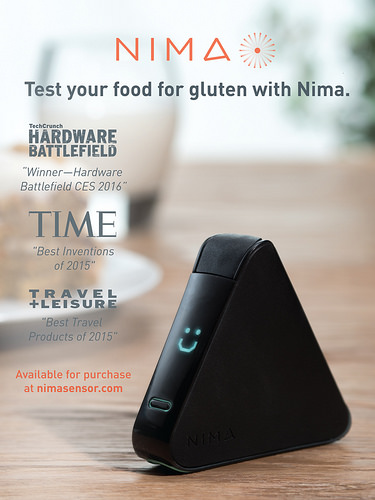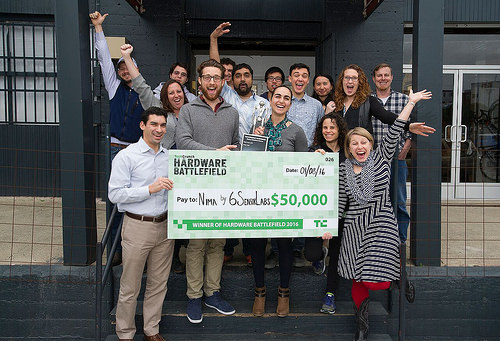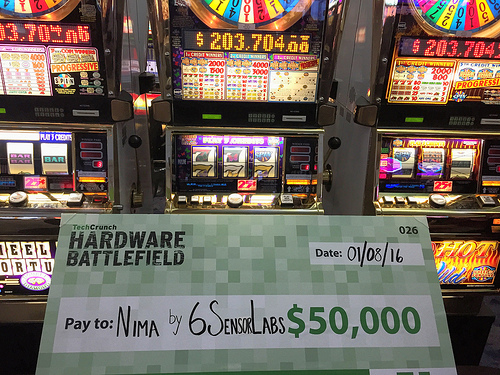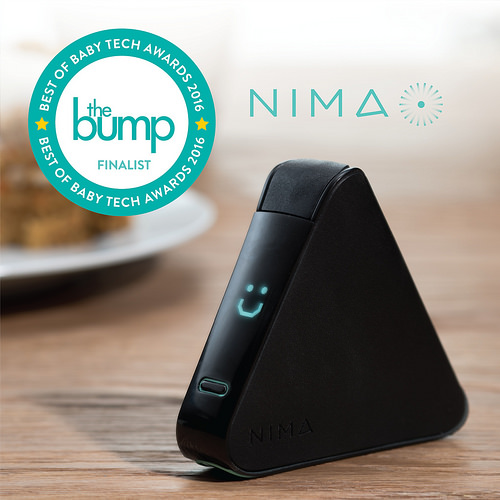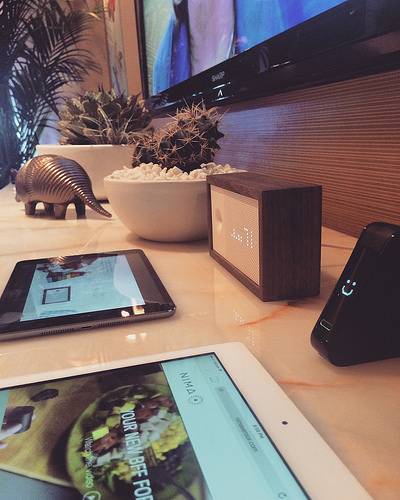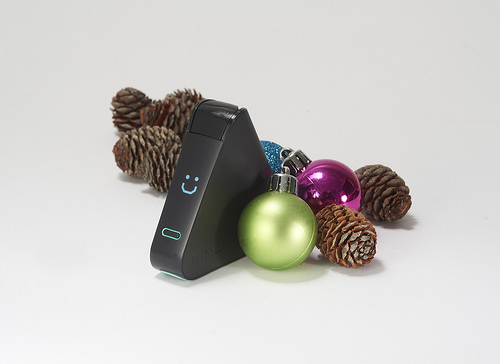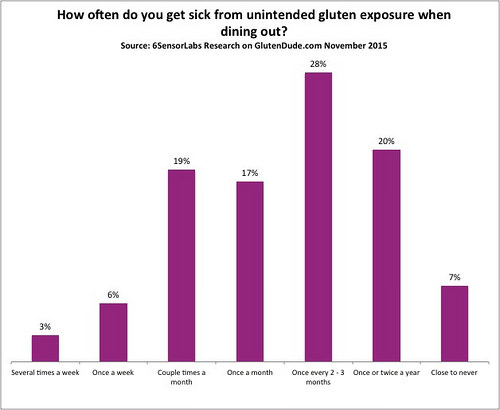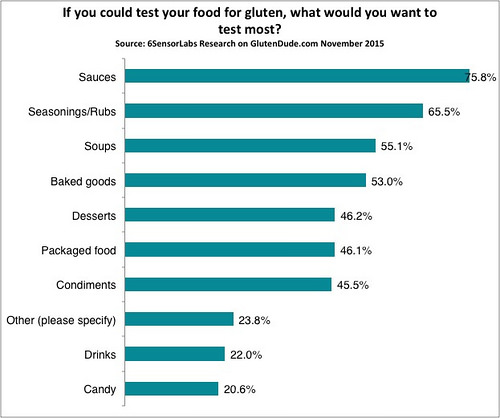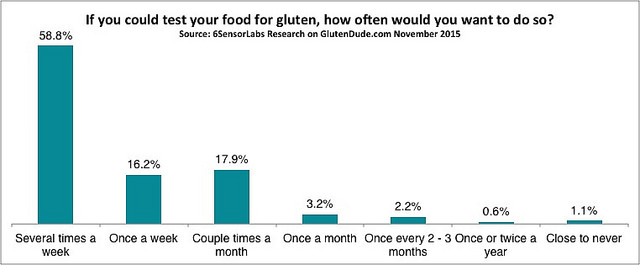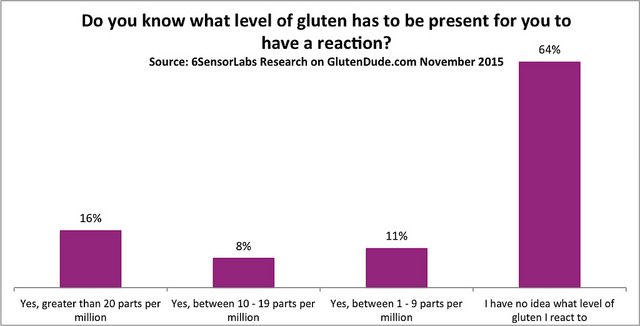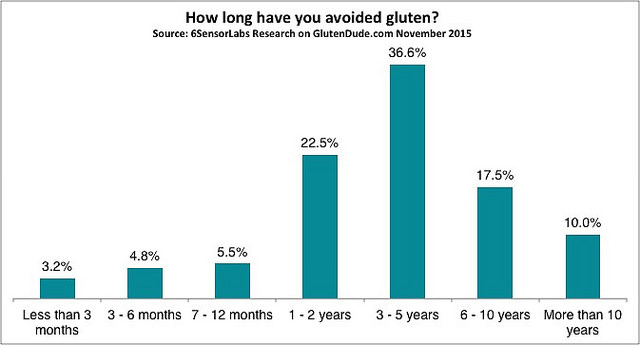Often, when people first hear about Nima, they say, “You have to be kidding me!” or, “Is it real? Please, let it be real.”
Yes, Nima is real!
The second question we usually get is, “Does it work?”
We’re working hard to conduct external third-party validations of Nima so that you know not only does it work but also the level of sensitivity of the system.
Nima is designed to be 99.5 percent accurate at 20 parts per million of gluten. We conduct on-going food testing to provide feedback on our accuracy, and this time, we compared our chemistry to a leading antibody, using outside laboratories to conduct the comparisons for us.
The comparison testing showed that Nima’s proprietary chemistry identified all cases where gluten was present at more than 20 ppm, as well as three cases where gluten levels were below 20 ppm.
This post explains what we tested, how we tested it and the results from the external labs versus Nima’s chemistry.
What did we test?
We compiled a set of 47 food items for testing, ranging from packaged foods to gluten-free items ordered at restaurants. Out of 47 foods, 25 were restaurant foods and 22 packaged goods.
Twenty-five restaurant items were ordered and selected for inclusion based on online reviews that had complaints of contamination, items previously ordered by us and tested as containing gluten, or items labeled gluten-free. Restaurant purchases were made by calling or ordering with a note that these food items were for someone with either a “severe gluten allergy” or celiac disease.
For the 22 packaged goods tested, items were chosen based on a few criteria: top items from consumer surveys, inbound requests for testing, online reports of cross-contamination/sickness, items with gluten-free ingredients without a gluten-free label, items that definitely were flagged as containing wheat and things produced on equipment also used for wheat products.
In all cases where cross-contamination or complaints about a food substance exist, they are purely anecdotal and remain unsubstantiated. It is important to review these sources since, until Nima and its app launches, people rely upon others’ reports of sickness to make eating decisions.
How did we sample and test Nima’s chemistry?
We partnered with two labs: Bia Diagnostics, a lab with 30 years in laboratory experience and nearly 20 years in food allergen testing, and BioAssaySystems, a well-known leader in the development of innovative and high-throughput assays and assay kits.
Two samples of each of the items were taken, with one sample sent to Bia Diagnostics and another sent to BioAssaySystems.
Bia tested its samples with the R-Biopharm 7001 kit, an AOAC-approved kit for gluten testing often considered the industry standard. The limit of detection (LOD) for this assay is 2 ppm, and limit of quantification (LOQ) is 5 ppm. What does this mean? For results greater than 5 ppm, there is a high degree of statistical confidence in the absolute value of gluten present. If the level is under 2 ppm, it may or may not contain gluten -- there is a much lower level of statistical confidence in the value. As a result, the tests Bia conducted with the R-Biopharm 7001 kit report the actual parts per million for the amount of gluten present when greater than 5 ppm. If the sample contains more than 84 ppm, due to the limited dynamic range of the assay, you will only see >84 ppm and not a specific number in the reporting.
The set of samples tested with Nima's technology were sent to BioAssaySystems. There, these food items were evaluated using the proprietary sample preparation and the 6SensorLabs proprietary antibody and assay designed specifically to work with the Nima device. BioAssaySystems reported the results of each test as containing gluten or no gluten detected, just as somene using Nima would see. Each item is reported in the tables below with the indicator someone using the device would see: frown (any gluten detected) or a smile (the sample contains less than 20 ppm of gluten).
Results Summary
Total items tested: 47
Percent containing gluten, reported by Nima: 13 percent
Percent containing gluten, reported by R-Biopharm: 13 percent
Six out of 47 total items (13 percent) contained gluten in some level as reported by Nima and by the R-Biopharm assay. Of the 47 items, only two were expected to contain gluten.
Restaurant testing results
Restaurant foods tested, ordered to be gluten-free: 25
Percent containing gluten, reported by Nima: 20 percent
Percent containing gluten, reported by R-Biopharm: 20 percent
All 25 restaurant items were ordered as gluten-free. Of these, Nima and R-Biopharm each have five reports of gluten contamination. Of these five, only one item exceeded the FDA standard for gluten-free (20 ppm) -- and that one item tested at greater than 84 ppm in the quantified results, more than four times the amount considered to be gluten-free.
Packaged goods results
Packaged goods tested, expected gluten-free: 20
Percent containing gluten, reported by Nima: none
Percent containing gluten, reported by R-Biopharm: none
Items tested, known to contain gluten or wheat in ingredients: 2
Percent containing gluten, reported by Nima: 100 percent
Percent containing gluten, reported by R-Biopharm: 100 percent
The packaged foods were more straightforward. Even in cases where food was selected that was not certified or was produced on shared equipment, results between Nima and R-Biopharm both show that no gluten could be detected. For the two items with gluten or wheat ingredients, both picked it up and reported the item as containing gluten.
Differences between Nima and R-Biopharm Results: Restaurant Foods
The raw data below shows all results from both Nima (as conducted by BioAssaySystems) and R-Biopharm (as conducted by Bia) tests.
Both Nima and R-Biopharm results report five items as containing gluten, however, only four items are the same between the two tests. Three items tested as having greater than 10 ppm of gluten with R-Biopharm. Each of these would have reported a frown with Nima. Additionally, one item at 3.6 ppm as identified by R-Biopharm also would have yielded a frown from Nima.
There are two discrepancies between the two tests:
-Sample was 7 ppm with the R-Biopharm test, which Nima labeled as gluten-free: This item qualifies as gluten-free based on U.S. FDA standards.
-One item which Nima labeled as having contained gluten, which R-Biopharm reported as less than 5 ppm: In this case, it’s possible that sampling impacted the results, as in previous rounds of testing from this restaurant, we have found low levels of contamination.
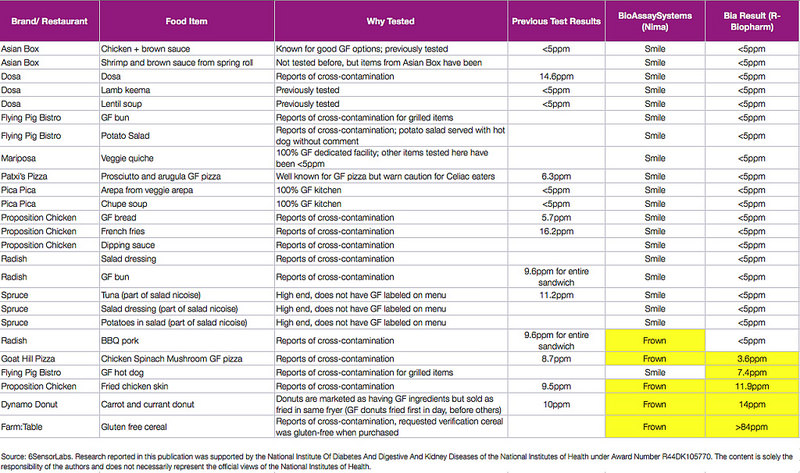
Differences between Nima and R-Biopharm Results: Packaged Foods
The raw data below shows all results from both Nima (as conducted by BioAssaySystems) and R-Biopharm (as conducted by Bia) tests. No discrepancies were found.
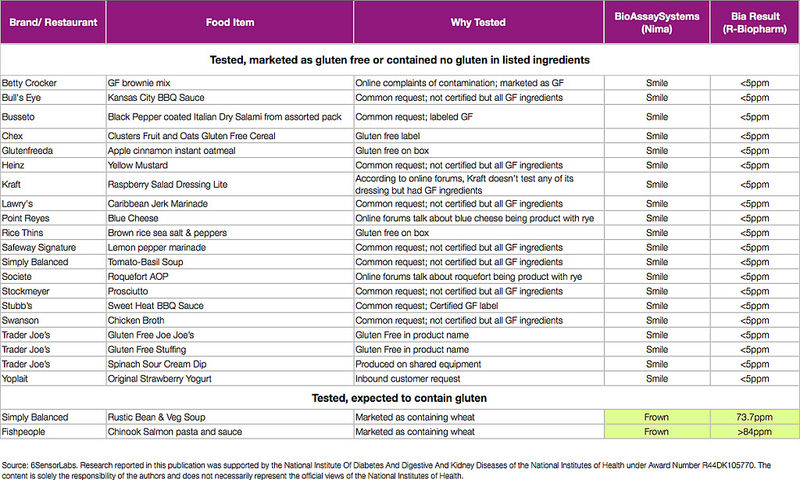
What’s Next?
2016 will bring full system validation conducted by a third party. This third party will summarize their results, which will compare the Nima device to results from a leading antibody. The results will be published on the 6SensorLabs blog and distributed in emails to all our subscribers on our email lists.
Research reported in this publication was partially supported by the National Institute Of Diabetes And Digestive And Kidney Diseases of the National Institutes of Health under Award Number R44DK105770. The content is solely the responsibility of the authors and does not necessarily represent the official views of the National Institutes of Health.

